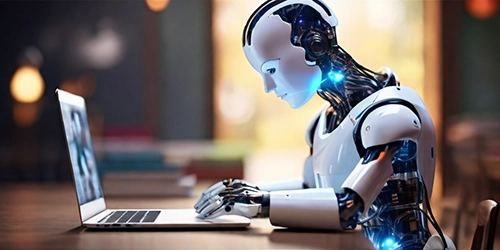AI is reshaping the contours of our world, as educators stand at the forefront of a monumental shift. The integration of AI in education is not just a fleeting trend; it’s a transformative force that promises to redefine teaching and learning. As educators grapple with this new reality, questions abound: How can AI enhance educational outcomes? What are the ethical considerations in its application? And most importantly, how can educators equip themselves to harness the full potential of this technological marvel? This exploration delves into these pressing questions, offering insights and practical strategies for educators to navigate the AI revolution with confidence and foresight.
Understanding AI in Education
- The Role of AI in Modern Classrooms: AI’s impact on education extends from personalized learning experiences to administrative efficiency. Tools like adaptive learning software and AI-driven analytics revolutionize how educational content is delivered and assessed.
- Ethical Implications and Data Privacy: With great power comes great responsibility. The ethical use of AI in education, particularly concerning data privacy and bias, is paramount. Educators must be vigilant in ensuring that AI tools are used in ways that protect students’ privacy and promote equity.
- Preparing Educators for an AI-Driven Future: Professional development is critical. Educators need training not only in using AI tools but also in understanding their implications. This includes staying informed about the latest AI advancements and their potential impact on education.
Practical Applications of AI in Education
- Enhancing Personalized Learning: AI can tailor learning experiences to individual student needs, adapting in real-time to their learning pace and style. This personalization can lead to improved student engagement and outcomes.
- Streamlining Administrative Tasks: AI can automate time-consuming administrative tasks like grading and scheduling, freeing educators to focus more on teaching and less on paperwork.
- Fostering Collaborative Learning Environments: AI can facilitate collaborative projects and peer learning, connecting students across geographies and cultures, thus broadening their educational experience.
Challenges and Considerations
- Addressing the Digital Divide: Ensuring equitable access to AI technologies is crucial. Efforts must be made to bridge the digital divide so all students benefit from AI advancements.
- Balancing Technology with Human Interaction: AI can enhance education but cannot replace the human element. Teachers’ roles in providing empathy, moral guidance, and critical thinking skills remain irreplaceable.
- Staying Ahead of the Curve: The rapid evolution of AI means that educators must continually update their skills and knowledge. Lifelong learning is not just a concept for students but for educators as well.
Conclusion: Embracing the Future with Optimism
The journey into the AI-enhanced educational landscape is filled with both challenges and opportunities. By embracing AI as a tool for enrichment rather than a replacement for the human touch, educators can unlock new possibilities for their students. As we navigate this uncharted territory, the focus must remain on leveraging AI to enhance the educational experience while upholding the values of equity, empathy, and lifelong learning.
Call to Action
Are you an educator looking to navigate the complexities of AI in your classroom? Do you seek guidance on integrating these technologies ethically and effectively? Reach out to explore how AI can transform your educational practices and prepare your students for a future where technology and humanity converge. Let’s embark on this journey together, shaping a future that’s informed, inclusive, and inspired by the limitless possibilities of AI in education.
For further insights and discussions on AI in education, please visit Chuck Gallagher’s website.







